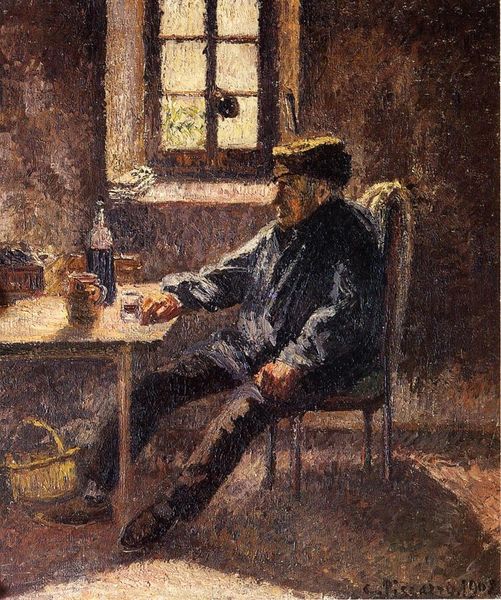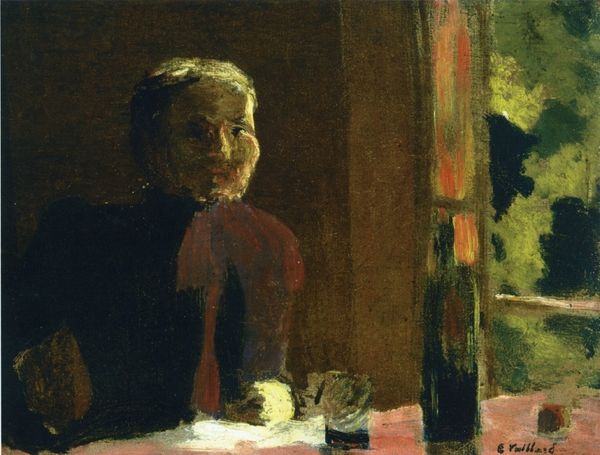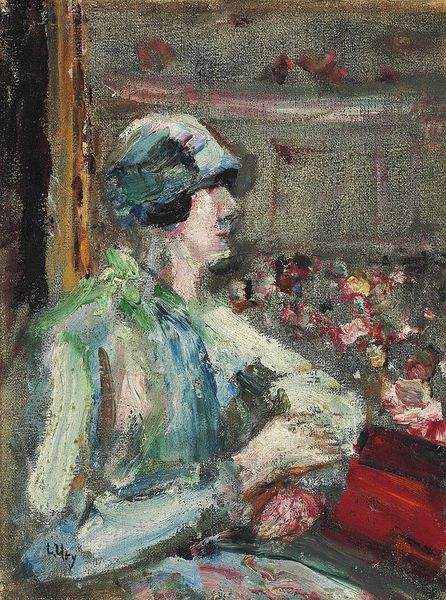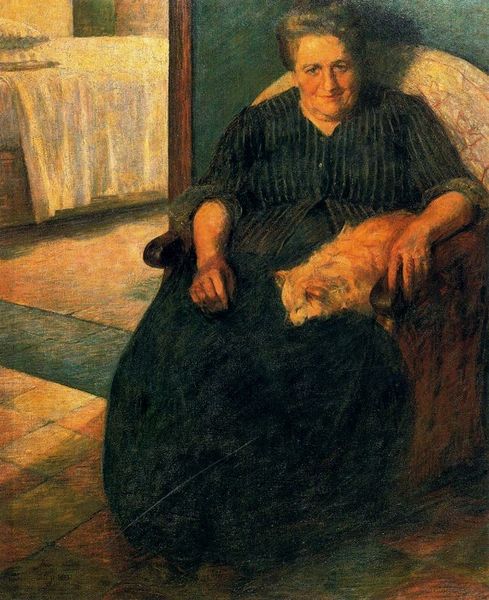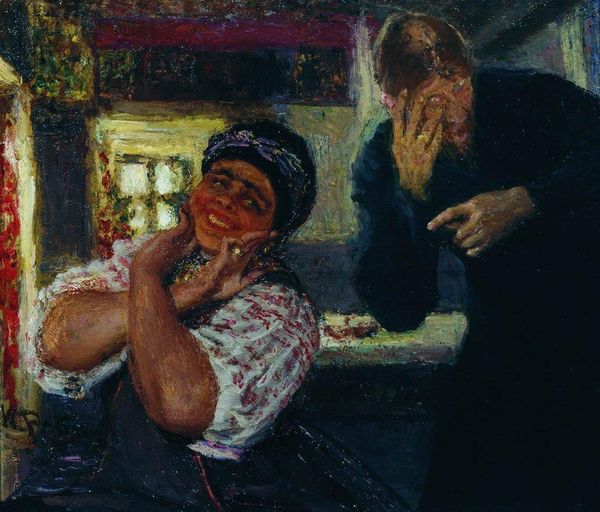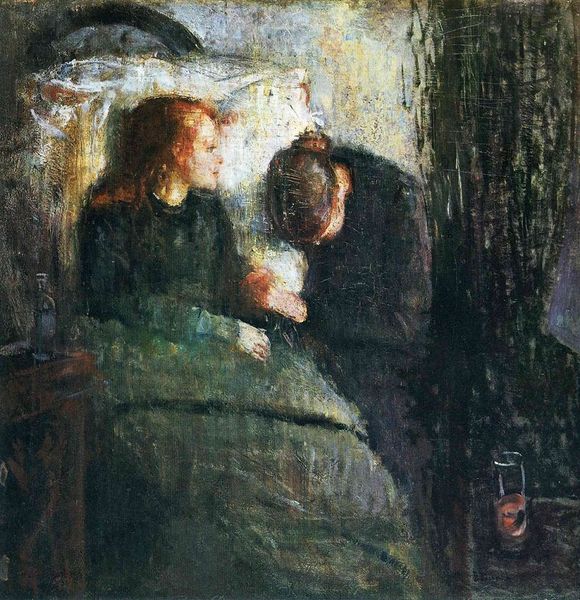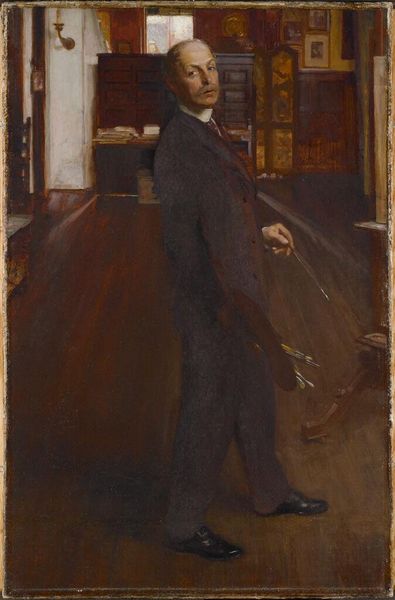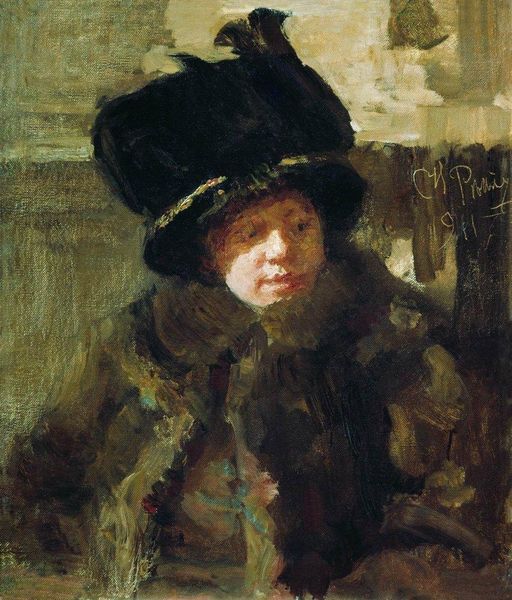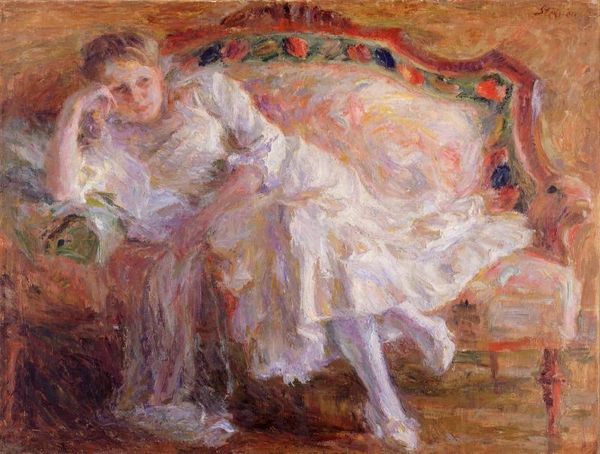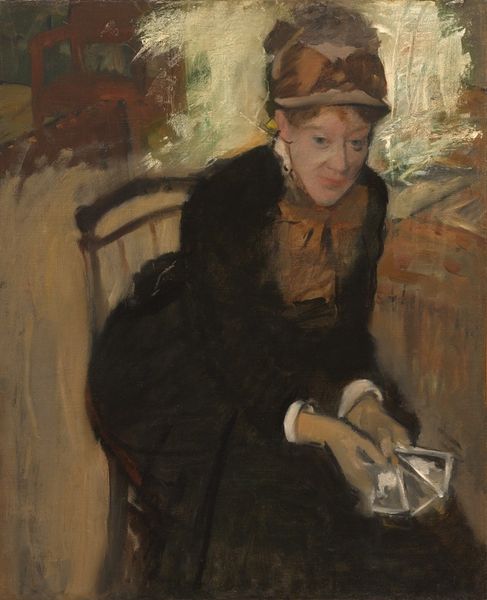
painting, oil-paint
#
portrait
#
painting
#
oil-paint
#
oil painting
#
expressionism
#
history-painting
#
expressionist
Copyright: Public domain
Curator: Here we have Ilya Repin’s “Portrait of Alexander Kerensky,” an oil painting dating from 1918. What's your initial impression? Editor: Unease, I'd say. It’s the chaotic brushwork combined with that haunted gaze. The subject seems almost trapped within the paint itself, as though the painting foresees the subject's impending historical doom and political freefall. Curator: Indeed, it’s far from a celebratory depiction. Kerensky was a key figure in the Russian Revolution, and the artist shows him at the end of his very short rein. Consider the clenched hand and the shadows beneath the eyes: this painting acts as an attempt to communicate Kerensky's troubled internal landscape during a tumultuous year for him. Editor: Right. He's a man on the precipice of irrelevance. Note that dark coloration of his hands. Repin painted this after Kerensky was already ousted and hiding. The palette evokes the moral compromises one inevitably encounters in the arena of revolution and post-revolution machinations, like soiled or unclean hands. What I find interesting is that in Russian iconography, darkness traditionally symbolizes chaos or evil. Does Repin suggest this about Kerensky? Curator: Perhaps it indicates an ambiguous attitude. In iconic visual languages, colors aren't merely aesthetic choices. Kerensky may not be villainized, but there's an acknowledgment of shadow. Observe how the impasto technique accentuates the textures—wrinkled clothing, tired face—there’s very little idealization of this particular symbol of power. Editor: True, there’s a bluntness here, far removed from traditional glorifying portraits. Look at how Repin captures the uncertainty, a real indictment of power, especially of the self-declared kind. Considering Repin's work and the revolution, he walks a fine line between allegiance and artistic honesty. What might the broader Russian public see reflected in Kerensky’s worn features? Curator: I'd argue this portrait presents a transitional moment, perhaps, embodying the anxiety of a society facing profound shifts. It captures the unraveling of an ideal, maybe disillusionment. A potent reminder of how swiftly power can be gained and lost. It invites reflection on the ever-shifting meanings projected onto public figures. Editor: So, Repin offers an individual study within a larger socio-political portrait. By unsettling the image of one fallen leader, we examine the fate of a generation swept up in change. It also invites considerations of complicity, legacy, and the haunting grip of history, on political ambition and political consequence. Curator: A compelling portrait both visually and symbolically, wouldn’t you agree? Editor: Absolutely, food for thought about representation, agency, and power, for sure.
Comments
No comments
Be the first to comment and join the conversation on the ultimate creative platform.
